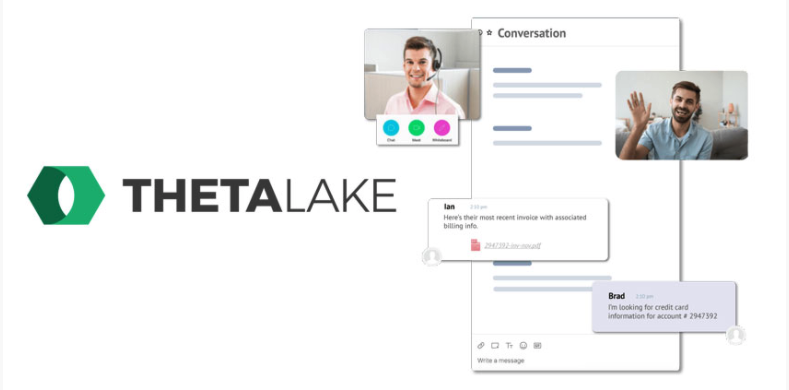
Ensuring secure capture, retention, and supervision with Theta Lake
Chat. Such a brief little word, suggesting something ephemeral, inconsequential… throwaway remarks and trivial content, that even in the business world feels closer to a post-it note than an email.
Today chat is used across organisations for every purpose: internal technology teams brainstorming on Slack, wealth managers making investment recommendations on Microsoft Teams, or customer support on RingCentral Glip. The tools we use for chat do everything from sharing links and documents to posting animated gifs and reactions as well as circulating videos and mp3s. It’s a productivity enhancer for internal collaboration, particularly in distributed organisations, and increasingly a channel for customer service and new business development externally. Chat has become an essential tool for the way we work and get things done today.
However, even if chat lacks the formality and tone of other kinds of written business communication, it still has a consequence and carries its own weight, both from a compliance and regulatory perspective, as well as from a brand reputation perspective.
Theta Lake’s automated review and analysis solution helps organisations understand the compliance risks associated with their chat interactions, and ensures that all communications are safely supervised and retained in line with applicable regulations and policies.
This can mean the removal of personal identifying content, as VP of Marketing, Rosa Lear, explained: “People need to understand that chat can be a real data loss threat, when people share information casually — here’s an account number, here’s a link to my personal file sharing account… That has to be edited before being stored.
“Everything that goes into our software suite is scanned for PII (Personally Identifiable Information), but we go further — for example, if someone shares a link, we automatically check the destination for anything inappropriate, and we scan any documents or assets shared in the chat too.”
Understanding chat conversations
Interpreting the risk profile of chat content means parsing the meaning of content as a whole, and requires intelligent automation which understands the kind of natural language people use, particularly in this easygoing medium.
“We take into account how people speak, not just the words that they use,” Lear explained. “With chat, especially, it’s very casual, because of how it’s permeated over from personal to business use, and people keep it very casual — they release materials on chat and say things that they wouldn’t necessarily do over email or on a voice call. So it contains its own set of risk”
“We go a step further by employing natural language processing to identify behaviour that doesn’t adhere to compliance rules as well as scanning the content users are sharing”.
Protecting the weakest link
Supervising chat using smart, AI-based technologies like Theta Lake immediately pinpoints potential employee misconduct or high-risk behaviour, as well as providing a solid audit trail for the business in the event of any breach or unexpected data loss. Now that every organisation works in a distributed manner, this is essential protection for any handling of identifiable, sensitive, transactional, contractual, or confidential information of any kind.
No one can control what happens on the other side of a chat conversation — which can be viewed by anyone in the line of sight of that screen, or captured by a screenshot — and educating all users about the importance of data security will always be the most important factor in securing information assets. But having a secure and compliant solution for capturing, retaining, and securing this most fleeting of business communications is no luxury in 2021.
Learn more about chat compliance from Theta Lake.










